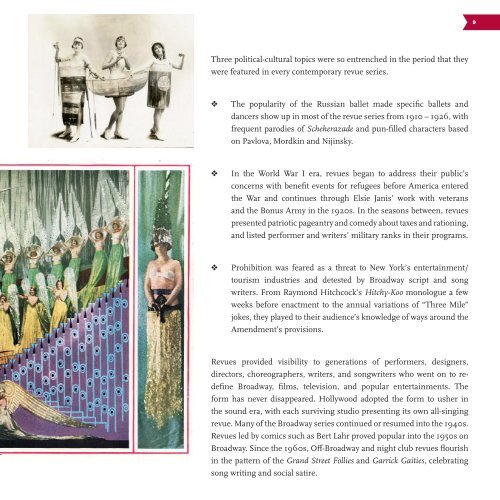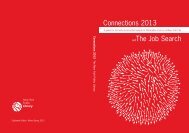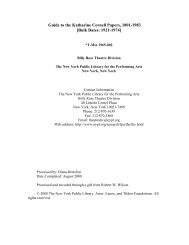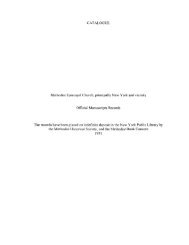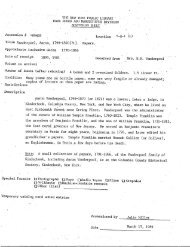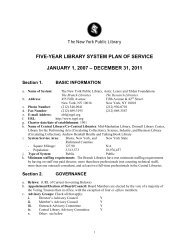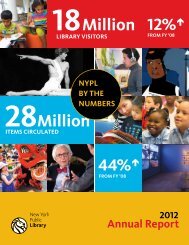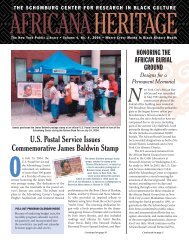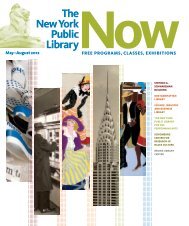The Great American Revue: - New York Public Library
The Great American Revue: - New York Public Library
The Great American Revue: - New York Public Library
You also want an ePaper? Increase the reach of your titles
YUMPU automatically turns print PDFs into web optimized ePapers that Google loves.
9<br />
Three political-cultural topics were so entrenched in the period that they<br />
were featured in every contemporary revue series.<br />
❖<br />
<strong>The</strong> popularity of the Russian ballet made specific ballets and<br />
dancers show up in most of the revue series from 1910 – 1926, with<br />
frequent parodies of Scheherazade and pun-filled characters based<br />
on Pavlova, Mordkin and Nijinsky.<br />
❖<br />
In the World War I era, revues began to address their public’s<br />
concerns with benefit events for refugees before America entered<br />
the War and continues through Elsie Janis’ work with veterans<br />
and the Bonus Army in the 1920s. In the seasons between, revues<br />
presented patriotic pageantry and comedy about taxes and rationing,<br />
and listed performer and writers’ military ranks in their programs.<br />
❖<br />
Prohibition was feared as a threat to <strong>New</strong> <strong>York</strong>’s entertainment/<br />
tourism industries and detested by Broadway script and song<br />
writers. From Raymond Hitchcock’s Hitchy-Koo monologue a few<br />
weeks before enactment to the annual variations of “Three Mile”<br />
jokes, they played to their audience’s knowledge of ways around the<br />
Amendment’s provisions.<br />
<strong>Revue</strong>s provided visibility to generations of performers, designers,<br />
directors, choreographers, writers, and songwriters who went on to redefine<br />
Broadway, films, television, and popular entertainments. <strong>The</strong><br />
form has never disappeared. Hollywood adopted the form to usher in<br />
the sound era, with each surviving studio presenting its own all-singing<br />
revue. Many of the Broadway series continued or resumed into the 1940s.<br />
<strong>Revue</strong>s led by comics such as Bert Lahr proved popular into the 1950s on<br />
Broadway. Since the 1960s, Off-Broadway and night club revues flourish<br />
in the pattern of the Grand Street Follies and Garrick Gaities, celebrating<br />
song writing and social satire.


